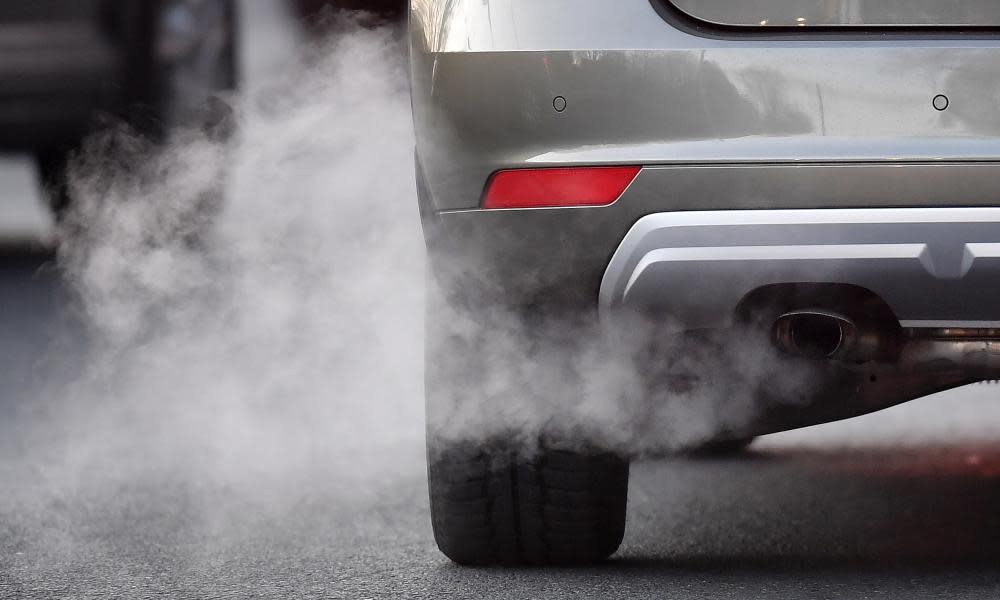Cyclists 'exposed to less air pollution than drivers' on busy routes

Cyclists are the least exposed to air pollution on daily commutes into a congested city centre, research has shown. People in cars and buses spent longer in toxic air, as did walkers unless they made detours to avoid main roads.
The work, conducted in Leeds, supports the investment in cycle lanes to both reduce air pollution by cutting vehicle journeys and improve citizens’ health. It also found that air pollution reached relatively high levels inside cars, echoing a recent warning that cars are “boxes collecting toxic gases”.
Other recent research has led experts to advise parents to use covers on their buggies during the school run to protect their infants. Research in London that compared only bus, tube and car commuting found that car drivers were least affected by air pollution.
Most urban areas in the UK have illegal levels of air pollution, and ministers have lost three times in the high court over the inadequacy of their action. The latest government action plan, described by environmental lawyers as “pitiful”, revealed that air pollution was much worse than previously feared.
The new research used high-quality portable pollution-measuring equipment to track rush-hour commutes of 4km (2.5 miles) into and out of Leeds city centre in June. All the commuters set off at the same time, and the cyclists were by far the fastest, arriving in 11 minutes, half the time of bus and car travellers.
The cyclists were exposed to a total of 12m pollution particles during their journey, almost half the number encountered by those in buses and cars. Cyclists may breathe more rapidly as they exercise, which would bring the particles they inhale up to close to that of motorised transport users. But on routes with slow traffic, where car and bus commuters are forced to sit in clouds of pollution, cyclists fare best.
“On more congested routes, the cyclist would come out with the lowest inhaled dose,” said James Tate, at the University of Leeds, who led the work. Segregated cycle lanes would reduce cyclists’ exposure even more, he said, with a distance of even a metre or two from traffic cutting particles by about a quarter. “Cycle lanes mean you can skip past traffic,” he said. Other research shows the exercise benefits of cycling outweigh the harm of air pollution.
The commuting route was quite long for walkers, and their 35-minute journey time meant they experienced the highest air pollution. The researchers also tested a green walking route that was 20% longer but avoided busy streets. They found particle exposure fell by 75% on the green route. In London, another study found green routes cut walkers’ exposure by half.
“Walkers have a decision to make, particularly on polluted days,” said Tate. “It may take a little longer but, if you have time, you can really cut down on your exposure by walking on a green route.”
The team analysed each stage of the commutes and found the most polluted times for walkers were when they waited at junctions controlled by traffic lights. For cyclists, the peak pollution was when high buildings formed a canyon that trapped toxic air.
Nitrogen dioxide, a pollutant largely emitted by diesel vehicles, was only measured in the vehicles, owing to the cumbersome size of the equipment needed. Inside the cabin of a small electric Nissan van, the driver was exposed to levels above the annual legal limit of 40 micrograms per cubic metre for much of the journey, with peaks of over 100 micrograms per cubic metre.
“Once you have drawn it in, it takes quite a while for the cabin to ventilate,” said Tate, who presented the work at a Royal Society of Chemistry conference. It would cost manufacturers just a few pounds to fit a charcoal filter that would cut nitrogen dioxide levels by 90%, he said.
Gary Fuller, of King’s College London, the author of The Invisible Killer, said: “Forty percent of car journeys in England are less than two miles so there is huge scope for walking and cycling. More active travel has multiple benefits: it can reduce air pollution, reduce climate change emissions and help with urban noise. But most of all, more active travel can help people to get more exercise in their everyday life, and yield huge health benefits as a consequence.”

 Yahoo News
Yahoo News 
